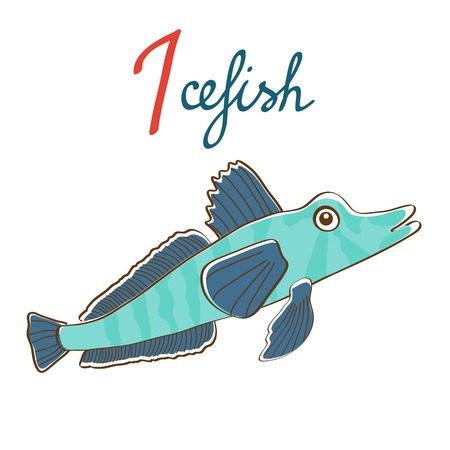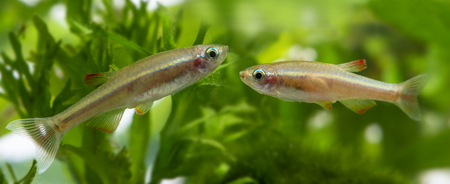Introduction to Estuarine Environments
Estuaries are fascinating and complex coastal habitats where freshwater from rivers meets and mixes with saltwater from the ocean. These environments serve as critical transition zones between land and sea, supporting a remarkable diversity of life. What makes estuaries so unique is their constantly changing conditions, especially when it comes to salinity. Unlike the relatively stable salinity found in open oceans or freshwater rivers, estuarine salinity levels can fluctuate dramatically due to tides, rainfall, river flow, and even human activities. This dynamic nature creates a challenging setting for organisms that live there, particularly fish, which must adapt their behavior to survive and thrive. Understanding why salinity varies in estuaries—and how these changes impact fish—provides valuable insight into the health and function of these vital ecosystems.
2. Understanding Salinity: Key Concepts
Salinity is a fundamental concept when studying estuarine environments, particularly regarding how it affects fish behavior. In simple terms, salinity refers to the concentration of dissolved salts in water, most commonly measured as parts per thousand (ppt). This measurement indicates how many grams of salt are present in one kilogram of water. Understanding salinity is essential for analyzing the dynamic nature of estuaries, where freshwater from rivers meets and mixes with seawater.
In the United States, salinity levels in estuaries can fluctuate significantly due to tidal cycles, seasonal river flow, and precipitation. Scientists typically measure salinity using electronic sensors called salinometers or refractometers, which provide quick and accurate readings in the field. The following table summarizes typical salinity ranges found in different aquatic environments:
| Environment | Salinity (ppt) |
|---|---|
| Freshwater | 0 – 0.5 |
| Estuarine (Brackish Water) | 0.5 – 30 |
| Seawater | 30 – 35 |
Most U.S. estuaries experience variable salinity depending on their location and the time of year. For example, the Chesapeake Bay often shows a gradient from near-freshwater conditions at river mouths to higher salinities closer to the Atlantic Ocean. These fluctuations create unique challenges for fish living in estuarine environments, as they must constantly adjust their physiological processes to cope with changing salt concentrations.

3. How Fish Detect and Respond to Salinity Changes
Fish living in estuarine environments face constant shifts in salinity, especially as tides and freshwater inflows change throughout the day. To survive and thrive under these dynamic conditions, fish have evolved a suite of physiological and behavioral adaptations. At the core of their response is osmoregulation—the process by which fish maintain internal salt and water balance despite external fluctuations. Specialized cells in their gills, known as chloride cells, actively regulate ion exchange, allowing fish to expel excess salts when moving into saltier waters or conserve salts when entering fresher zones. Beyond cellular mechanisms, hormones such as cortisol and prolactin play crucial roles in triggering these responses, fine-tuning the fish’s ability to adapt on short notice.
Behaviorally, many estuarine species exhibit remarkable flexibility. Some fish can sense even minor changes in salinity through chemoreceptors located on their skin and gills. When faced with rapid shifts, certain species may actively seek out microhabitats—such as tidal pools or submerged vegetation—where salinity remains more stable. Others display migratory behaviors, moving between saltier and fresher areas as part of their daily or seasonal routines. This adaptability not only helps reduce stress but also maximizes feeding opportunities and predator avoidance. Overall, both physiological tuning and behavioral strategies are essential for fish to cope with the ever-changing salinity landscape of estuaries.
4. Case Studies: Common Estuarine Fish in the U.S.
Estuaries along the U.S. coastline are home to a diverse array of fish species, many of which have evolved specialized behaviors and physiological mechanisms to cope with shifting salinity levels. Understanding how these species react to salinity gradients not only helps biologists but also supports fisheries management and conservation efforts. Below, we highlight a few iconic examples commonly found in American estuarine environments and explore their behavioral responses to changes in salinity.
Striped Bass (Morone saxatilis)
Striped bass are highly migratory and well-known for their ability to tolerate broad salinity ranges. These fish spawn in freshwater rivers but spend much of their adult life in brackish or marine waters. Research shows that striped bass actively seek out optimal salinity zones (usually between 5-18 ppt) during different life stages to maximize growth and survival rates. Sudden increases or decreases in salinity can trigger avoidance behavior or even migration to more favorable areas within an estuary.
Atlantic Croaker (Micropogonias undulatus)
The Atlantic croaker is another classic example of a euryhaline species thriving in estuarine systems. Juvenile croakers are particularly sensitive to low salinity levels, which can influence both their distribution and feeding habits. As they mature, croakers gradually move towards higher salinity zones closer to the ocean. Behavioral studies show that Atlantic croaker display reduced activity and altered schooling patterns when exposed to rapid shifts in salinity, especially below 5 ppt.
Behavioral Responses Across Species
| Species | Preferred Salinity Range (ppt) | Common Behavioral Response |
|---|---|---|
| Striped Bass | 5-18 | Seek optimal zones; migrate if stressed |
| Atlantic Croaker | 10-25 | Alter feeding & schooling; migrate as adults |
| Mummichog (Fundulus heteroclitus) | 0-35 | Tolerate wide range; minimal behavioral change except at extremes |
| Blue Crab (Callinectes sapidus) * | 5-35 | Migrate for spawning; adjust molting timing based on salinity |
*Note: While not a fish, blue crab is included due to its ecological importance and similar behavioral adaptations.
Summary of Observations
The case studies clearly illustrate that while some estuarine species exhibit remarkable flexibility, others are more sensitive to abrupt changes in salinity. Factors such as age, life stage, and even genetic variability play a role in how individual fish respond. This diversity of responses highlights the importance of maintaining natural salinity gradients in estuarine ecosystems for both biodiversity and fishery sustainability.
5. Behavioral Changes Linked to Salinity Levels
Salinity fluctuations in estuarine environments trigger a wide range of behavioral adaptations among fish species, shaping how they feed, breed, migrate, and form schools. Understanding these responses is crucial for anyone interested in estuarine ecology or fisheries management in the United States.
Feeding Behavior
Many estuarine fish are opportunistic feeders, but their feeding patterns shift noticeably with changes in salinity. When salinity levels rise, some species may move toward freshwater zones to find prey suited to their physiological limits. Conversely, lower salinity can reduce available food sources or alter prey composition, forcing fish to adjust their diets or foraging locations. American species like striped bass are known to switch feeding grounds as salinity fluctuates, often following baitfish that also respond to these environmental changes.
Breeding Behavior
Reproduction in estuarine fishes is tightly linked to optimal salinity ranges. Many species time their spawning migrations to coincide with specific salinity windows that favor egg development and larval survival. For instance, Atlantic menhaden spawn offshore but require estuarine conditions of moderate salinity for juvenile growth. If salinity levels stray from this sweet spot due to droughts or heavy rains, breeding success rates may drop dramatically.
Migration Patterns
Fish migration within estuaries is largely dictated by the ever-changing mix of fresh and saltwater. Species such as salmon and shad rely on precise salinity cues to trigger their movements between marine and freshwater habitats during different life stages. A sudden spike or drop in salinity can disrupt these natural rhythms, delay migration, or even strand fish outside of suitable habitats.
Schooling Dynamics
Salinity not only affects individual behavior but also collective actions like schooling. Fluctuating salinity can break up schools if some members become physiologically stressed or disoriented. This fragmentation increases predation risk and makes it harder for fish to locate food efficiently. On the flip side, stable salinity conditions promote tighter schools and more coordinated movement, which is especially important in predator-rich estuarine waters.
Adaptation and Resilience
Despite these challenges, many estuarine fishes have developed remarkable resilience to shifting salinities through behavioral plasticity. The ability to alter feeding strategies, modify migratory timing, or regroup into new schools demonstrates the adaptability that allows them to thrive in dynamic environments—an essential trait for survival in American estuaries affected by both natural variability and human influence.
6. Environmental Stress and Human Impact
Estuarine environments are highly sensitive to both natural changes and human activities, making them particularly vulnerable to shifts in salinity levels. A variety of factors—ranging from pollution and climate change to water management practices—can significantly alter the delicate balance of salt and freshwater in these ecosystems. Each of these stressors can influence fish communities in unique ways, often compounding the effects of natural variability.
Pollution: Altering Water Chemistry
Industrial discharge, agricultural runoff, and urban waste introduce contaminants such as heavy metals, excess nutrients, and chemicals into estuaries. These pollutants not only degrade water quality but also disrupt natural salinity gradients by increasing freshwater input or altering evaporation rates. For example, nutrient-rich runoff can fuel algal blooms that affect dissolved oxygen levels, indirectly stressing fish already coping with fluctuating salinity.
Climate Change: Shifting Patterns
Climate change is reshaping estuarine dynamics through sea level rise, increased temperatures, and altered precipitation patterns. More intense storms can flush large amounts of freshwater into estuaries, lowering salinity for extended periods. Conversely, droughts reduce river flow and increase evaporation, pushing salinity higher. Fish species adapted to a certain range may struggle or migrate elsewhere as their habitats become inhospitable due to these rapid changes.
Water Management Practices: Controlled Flows
Human interventions like dam construction, channelization, and diversion of rivers for agriculture or urban use have profound effects on estuarine salinity. Dams can restrict the natural flow of freshwater into estuaries, causing saltwater intrusion from the ocean. Similarly, water extraction for irrigation can decrease river discharge, raising the estuarys salinity beyond what many fish species can tolerate.
Cumulative Impacts on Fish Communities
The combined pressures from pollution, climate change, and water management intensify environmental stress on fish populations. These stressors can reduce reproductive success, hinder migration patterns, and limit food availability. Over time, sensitive species may decline or disappear altogether, leading to less diverse and resilient fish communities.
Toward Sustainable Solutions
Understanding how these human-driven factors interact with natural salinity cycles is essential for managing estuarine environments effectively. Implementing better pollution controls, adapting water management strategies to maintain natural flow regimes, and mitigating climate impacts through restoration projects are key steps toward preserving healthy fish populations in Americas vital estuarine habitats.
7. Conclusion and Future Perspectives
Understanding how salinity levels affect fish behavior in estuarine environments is essential for the health of North America’s coastal ecosystems. As we have seen, fluctuations in salinity can influence fish migration patterns, feeding habits, and reproductive success. These behavioral changes impact not only individual species but also the broader food web and ecosystem stability. The implications are significant: effective management of estuarine habitats requires an ongoing commitment to monitoring salinity trends and their biological impacts.
Recent research continues to investigate how native and invasive fish species adapt—or fail to adapt—to changing salinity conditions caused by climate change, water diversion, and urban development. Scientists in the U.S. are deploying advanced telemetry, genetic analysis, and modeling tools to better predict fish responses to rapid environmental shifts. This data-driven approach helps resource managers make informed decisions about habitat restoration and fisheries regulation.
On the conservation front, there is growing collaboration among government agencies, tribal nations, academic institutions, and local communities to restore estuarine wetlands, improve water quality, and ensure adequate freshwater inflow. In places like the Chesapeake Bay, San Francisco Bay-Delta, and Gulf Coast estuaries, these collective efforts are beginning to show positive results for fish populations and biodiversity.
Looking ahead, continued investment in research and cross-sector partnerships will be vital. As our understanding deepens, it will be crucial to integrate scientific findings into public policy and community action plans. By doing so, we can help secure the resilience of estuarine environments—and the fish that depend on them—for generations to come.


